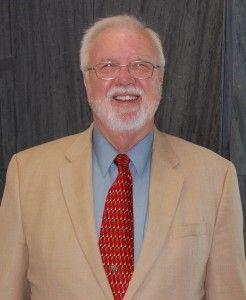Can Western Kentucky "Build Back Better" from Recent Tornado Outbreak
Western Kentucky is currently the focus of the nation’s attention as the region undergoes recovery from the devastating recent series of tornadoes. These twisters, that will rank near the top of the state’s most deadly tornadoes, killed scores of people, caused more than $1 billion in property damage, and leveled whole neighborhoods in Mayfield, Dawson Springs, Bowling Green, and tiny Bremen in Muhlenberg County.
The outpouring of public and private assistance in the recovery efforts has been so far outstanding. The long term recovery of the effected communities will likely take years.
Natural disasters in western Kentucky are not new. In 1811, the New Madrid earthquake in what became the Jackson Purchase in far western Kentucky ranks among the nation’s most severe quakes, causing the Mississippi River to reverse course temporarily, but it came when Kentucky was still part of the western frontier and sparsely settled. Its most lasting consequence was its contribution to the Great Revival, in which Kentucky was ground zero for an evangelical movement in America that swept the country.
This most recent disaster, in many ways, is reminiscent to the 2009 ice storm that also impacted counties stretching from the Jackson Purchase into the Western Kentucky Coal Field by depriving thousands of homes of basic public services and cutting the region off from the rest of the world for weeks.
Perhaps the worst natural disaster in the region was the Great Ohio River Flood of 1937. In a “1,000-year flood” that covered the entire length of the Ohio River during that January and February and also caused flooding along the Mississippi, Tennessee, Cumberland, and Green Rivers in western Kentucky. Many cities, most notably Paducah, were forced to evacuate. Recovery was aided by workers from the New Deal Civilian Conservation Corps and Works Progress Administration played vital roles in the search and recovery process – one of the earliest examples of federal assistance in a local natural disaster.
The example set in 1937 provides hope that a natural disaster can provide an opportunity for public and private entities to come together to “build back better.” Boosters from across western Kentucky united with political leaders in Washington and Frankfort to address critical needs in the region. Behind US Senate Majority Leader Alben Barkley from Paducah, the Congress provided funding to build the TVA dam at Gilbertsville that addressed flood control on the Ohio and Tennessee Rivers. When finished in 1944, Kentucky Dam was the largest of the TVA dams. The hydroelectric power it generated, after a pitched battle between advocates of public power, led in the Kentucky general assembly by Paducahan Henry Ward against private utilities, cheap electricity brought the 20th century to rural households and set the stage for the location of the massive uranium enrichment plant near Paducah in the 1950s. Impoundment of the Tennessee River to form Kentucky Lake provided recreational opportunities. The area’s tourism economy was greatly advanced by KenLake and Kentucky Dam State Parks, two of the state’s most popular state parks.
The question posed here is whether or not leaders in western Kentucky can once again rise to the occasion to move it forward in the coming years.
George Humphreys is retired as research director for the Oklahoma House of Representatives and director for the Muhlenberg County Campus of Madisonville Community College. His forthcoming book, The Fall of Kentucky’s Rock: Western Kentucky Democratic Politics Since the New Deal (University Press of Kentucky) will be available in January 2022.



























